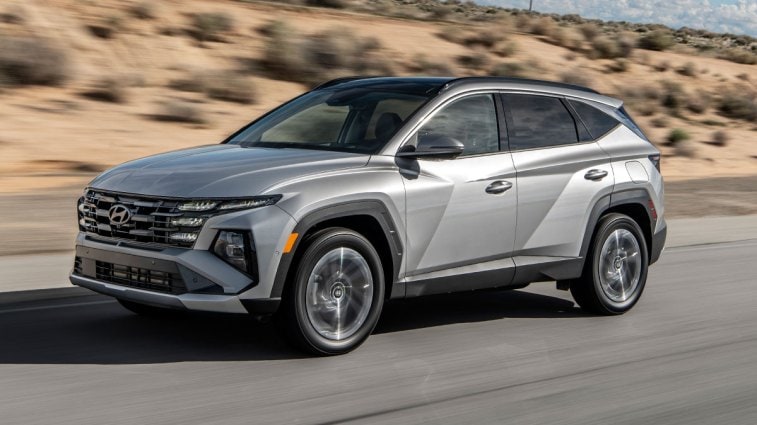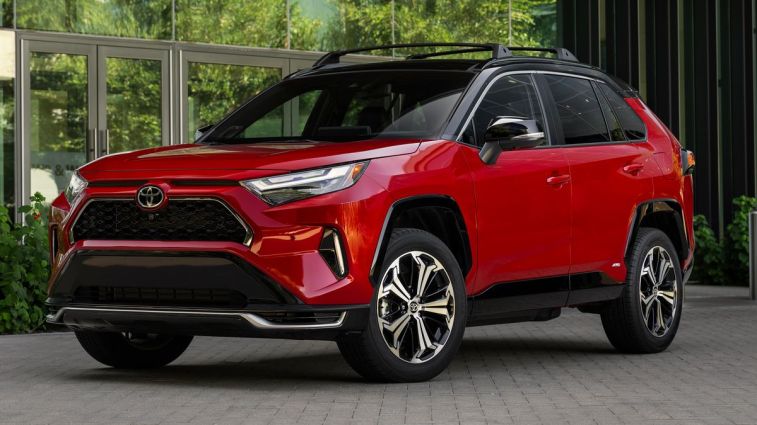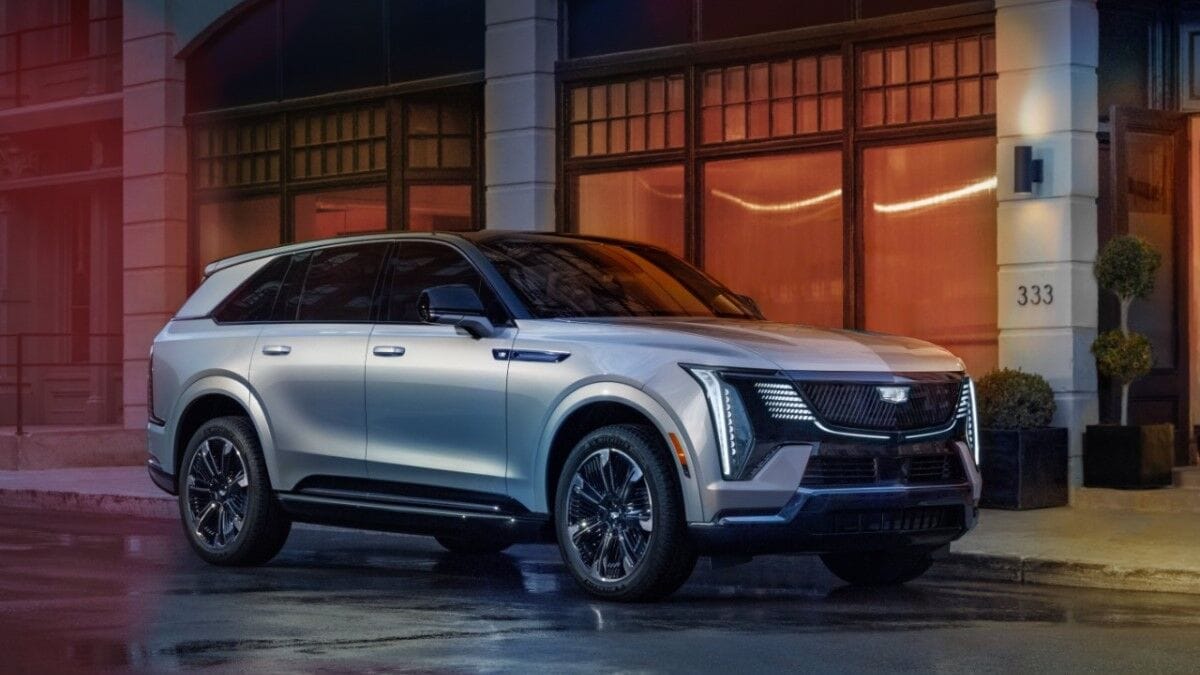Plug-in hybrid vehicles are like having the best of two worlds: a standard gasoline-powered car and an electric vehicle in one. With both powertrains onboard, a PHEV can use battery power alone for running errands and in-town commuting, then switch its gasoline engine on for, say, a cross-country road trip. You’re never at the mercy of waiting hours for your vehicle to charge, yet you get superior efficiency and flexibility.
Such a plug-in hybrid powertrain is an even keener idea when used in a compact SUV, the most popular type of vehicle on the road today. Two stellar examples are the 2025 Hyundai Tucson Plug-in Hybrid and the Toyota RAV4 Plug-in Hybrid. Here’s how these two compare.
2025 Hyundai Tucson Plug-in Hybrid

The Hyundai Tucson Plug-in Hybrid could be called the pinnacle of the Tucson lineup, which also includes standard gasoline and hybrid models. With the plug-in Tucson, you get the ability to travel up to 32 miles on battery power alone. Thanks to the onboard turbocharged 4-cylinder engine, the Tucson Plug-in Hybrid also happens to be the most powerful variant, making a robust 268 horsepower total. That power is fed to a standard all-wheel-drive (AWD) system, and unlike most other PHEV powertrains, the Tucson uses a 6-speed automatic transmission instead of a continuously variable setup, which tend to drone at times.
Like every Hyundai, the Tucson Plug-in Hybrid carries an unbeatable warranty that includes 10 years/100,000 miles of powertrain coverage. For 2025, the Tucson Plug-in Hybrid sees some design tweaks to keep it fresh, along with a feature new parents might just appreciate. See below.
Hyundai Tucson Plug-in Hybrid Highlights
Baby mode: This new feature softens throttle response so you can more gently pull away from a stop, which might make the difference between letting your newborn sleep instead of going into a crying fit. We think dogs will also appreciate this one-of-a-kind feature.
Blind-Spot View Monitor: This feature, standard on the Limited trim, displays in the digital instrument cluster real-time video to the sides of the Tucson Plug-in Hybrid when you engage the turn signal. It’s a feature we’ve come to love on Hyundai cars, and one you won’t find on any Toyota RAV4.
Impressive touchscreen: The Tucson Plug-in Hybrid comes standard with a generous 12.3-inch touchscreen, bigger than what you’ll find on the RAV4 Plug-in.
Check this week’s Fair Purchase Price or see the Tucson Hybrid models for sale near you.
2025 Toyota RAV4 Plug-in Hybrid

The 2025 Toyota RAV4 Plug-in Hybrid is also the pinnacle of the best-selling RAV4 lineup, and even though there’s an all-new RAV4 around the corner, this model remains highly recommendable. And here’s a little secret about the RAV4 Plug-in Hybrid: It’s one potent sleeper. Thanks to its gas/electric powertrain, the Toyota RAV4 Plug-in Hybrid packs a combined 302 hp and the ability to zip from zero to 60 mph in a scant 5.7 seconds.
For 2025, the most notable change is in this model’s name. It used to be called the RAV4 Prime, but now it’s the RAV4 Plug-in Hybrid. We think this model’s design has aged well, and we love the contrast-color roof that comes with the XSE trim.
Toyota RAV4 Plug-in Hybrid Highlights
More range: The 2025 RAV4 Plug-in Hybrid can go up to 42 miles on battery power alone, easily topping the Tucson Plug-in’s 32-mile distance.
More power: With its 300-plus hp rating, the Toyota also drubs the Hyundai in total power output, too.
JBL audio: Our ears always enjoy the 11-speaker/800-watt premium JBL audio system that comes in the XSE trim of the RAV4 Plug-in Hybrid.
Check this week’s Fair Purchase Price or see the RAV4 Plug-in Hybrid models for sale near you.
Similarities
Both of these 5-passenger plug-in hybrid compact SUVs have all-wheel drive standard, the most power of their respective lineups, and the ability to go dozens of miles on battery power alone, then travel as far as you need before refilling with gas.
Pricing
New 2025 Toyota Prius Plug-in Hybrid Prices
|
Retail Price
|
Fair Purchase Price (43085)
|
|||
|---|---|---|---|---|
$34,510 |
$33,930 |
|||
$37,760 |
$36,619 |
|||
$41,205 |
$40,158 |
The Kelley Blue Book Fair Purchase Price for any individual used vehicle can vary greatly according to mileage, condition, location, and other factors. The prices here reflect what buyers are currently paying for New 2025 Hyundai Tucson Plug-in Hybrid vehicles and New 2025 Toyota Prius Plug-in Hybrid vehicles in typical condition when purchasing from a dealership. These prices are updated weekly. The manufacturer’s suggested retail price (MSRP) quoted includes the destination fee, but does not include tax, license, document fees, and options.
Specifications
| 2025 Hyundai Tucson Plug-in Hybrid | 2025 Toyota RAV4 Plug-in Hybrid | |
| Popular Powertrains | ||
| Engine | 1.6-liter turbo 4-cylinder + electric motor | 2.5-liter 4-cylinder engine + electric motor |
| Horsepower (combined) | 268 hp | 302 hp |
| Torque (combined) | 271 lb-ft | NA |
| Transmission | 6-speed automatic/AWD | continuously variable automatic (CVT)/AWD |
| Fuel Economy | 77 MPGe combined | 94 MPGe combined |
| Also Available | Gasoline-only; hybrid | Gasoline-only; hybrid |
| Specs | ||
| Basic Warranty | 5 years/60,000 miles | 3 years/36,000 miles |
| Powertrain Warranty | 10 years/100,000 miles | 5 years/60,000 miles |
| NHTSA Overall Safety | Not rated | Not rated |
| Max Seating Capacity | 5 | 5 |
| Wheelbase | 108.5 inches | 105.9 inches |
| Overall Length | 182.7 inches | 180.9 inches |
| Width | 73.4 inches | 73.0 inches |
| Height | 65.6 inches | 67.0 inches |
| Turning Diameter | 38.6 feet | 36.1 feet |
| Headroom, Front | 40.1 inches | 37.7 inches |
| Headroom, Rear | 39.5 inches | 39.5 inches |
| Legroom, Front | 41.4 inches | 41.0 inches |
| Legroom, Rear | 41.3 inches | 37.8 inches |
| Shoulder Room, Front | 57.6 inches | 57.8 inches |
| Shoulder Room, Rear | 56.0 inches | 56.4 inches |
| Cargo Volume seats up/down | 31.9/66.3 cubic feet | 33.4/63.1 cubic feet |
Conclusion
Though the Tucson Plug-in Hybrid is fresher than the RAV4 Plug-in Hybrid, this match is closer than you might think. The Hyundai has a longer warranty, lower starting price, more cargo room, and fresher tech. Yet the Toyota goes a longer distance on battery power alone, has more power, and is instilled with Toyota’s sterling reputation for reliability and resale value. In a contest this close, we suggest you test drive them both to see which feels like the best fit for you and your budget.







